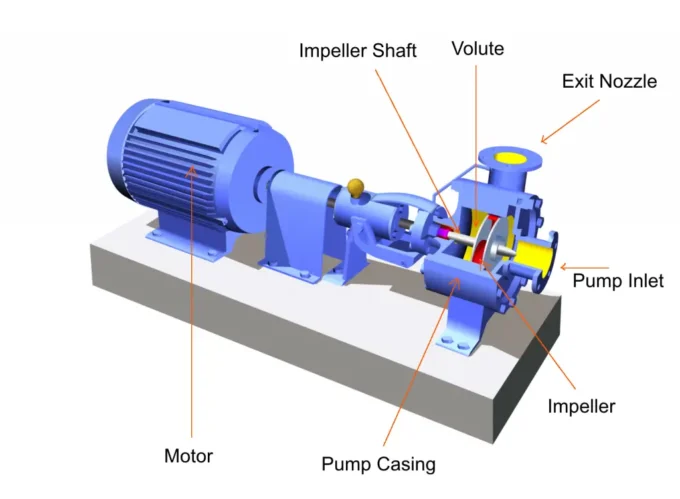Imagine a day without water flowing from the tap, no fuel at the gas station, or industrial machinery grinding to a halt. It’s a bleak picture, isn’t it? This is the world without pumps – devices engineered to move fluids or gases from one place to another. Pumps are silent performers that play pivotal roles in various sectors such as agriculture, petroleum, water and sewage treatment, and more.
We’ll unravel the different types of pumps, their working mechanisms, and where they are applied. Our focus in today’s article, powered by FloridaIndependent, is to dive deep into the fascinating world of pumps. This exploration is not just for engineers and industry professionals; it’s equally essential for anyone who interacts, directly or indirectly, with these critical devices.
Overview of Pumps
Before we delve into the specifics of individual pump types, let’s first acquaint ourselves with the fundamental operating principle shared by all pumps. No matter their design, all pumps function based on a simple but profound concept: they create a low-pressure zone that acts like a vacuum, drawing the fluid into the pump.
Then, they generate a high-pressure zone that pushes the fluid out, facilitating its movement. However, this process, though shared, is accomplished in unique ways in the two primary categories of pumps.
These categories are dynamic pumps, which include centrifugal ones, and positive displacement pumps. Both these categories encompass a broad range of pumps, each serving specific applications based on how they apply this core pumping principle.
Centrifugal Pumps

Source: theengineersperspectives.com
Centrifugal pumps, the most common type of dynamic pump, rely on an element of physics known as centrifugal force. When the pump is activated, the motor powers an impeller, which spins rapidly. This spinning creates a force that thrusts the fluid outward from the impeller’s center, causing the fluid’s pressure to increase and its velocity to rise. This is how a centrifugal pump transports fluid.
Centrifugal pumps are the cornerstone of many industries. They are extensively used in water supply systems, power plants, and oil refineries. Their popularity stems from their ability to handle large volumes of fluids, their adaptability to variable flow conditions, and their relative simplicity in design and maintenance. However, these pumps are less effective with highly viscous fluids or fluids containing solid matter, as these can impede the impeller’s rotation. In such situations, grinder pumps, which can handle tougher materials, are more suitable, but they may require specific maintenance and grinder pump repairs to ensure they operate effectively and efficiently in challenging environments.
Positive Displacement Pumps

Source: processindustryforum.com
Positive displacement pumps offer a different mechanism. They move fluids by trapping a specific amount in an enclosed volume and then forcing (or displacing) that trapped fluid into the discharge pipe. This category is further split into 2 subtypes: reciprocating and rotary pumps.
Reciprocating Pumps

Source: youtube.com
In a reciprocating pump, a piston moves back and forth inside a cylinder. When the piston retracts, it creates a vacuum that opens an inlet valve and draws fluid into the cylinder. As the piston advances, the inlet valve closes, an outlet valve opens, and the fluid is pushed out.
Reciprocating pumps, like hand-operated water pumps or high-pressure power washers, are ideal for applications requiring high pressure and low flow rates. They are also commonly used in oil drilling operations and in hydraulic systems.
Rotary Pumps
Rotary pumps, on the other hand, use a rotating mechanism to move the fluid. The rotation creates suction at the pump inlet, allowing fluid to enter. As the rotation continues, the fluid is transported to the outlet and discharged.
Rotary pumps, found in applications like fuel injection in automobiles and fluid power hydraulics in heavy machinery, offer smooth, continuous flow regardless of pressure changes. However, they require closer tolerances and more regular maintenance than reciprocating pumps.
Submersible Pumps

Source: multiphase-corp.com
Submersible pumps are specially designed to operate while fully submerged in the fluid they are pumping. An electric motor is hermetically sealed and closely coupled to the pump body. The entire assembly is submerged in the fluid, so the pump pushes the fluid to the surface rather than pulling it up, which significantly increases efficiency.
Submersible pumps are used extensively in water and oil wells, where they can operate directly in the liquid being pumped. They’re also common in sewage systems, where they handle a mix of water and solid waste, and in flood control operations.
Diaphragm Pumps

Source: debem.com
Last but not least, let’s look at diaphragm pumps. They operate on the principle of variable volume. A diaphragm within the pump chamber expands and contracts, alternately filling with fluid and then pushing it out. The diaphragm’s movement is usually driven by compressed air, hydraulic fluid, or an electromechanical drive.
Diaphragm pumps are often used in applications requiring high pressure and low flow, like in laboratory work, or in applications handling dangerous or corrosive fluids. They are also used in food and beverage industries because their design allows for sanitary fluid movement.
Conclusion
As we’ve journeyed through the intricate world of pumps, we’ve come to recognize them as foundational to our modern society. Each type, be it centrifugal, positive displacement, submersible, or diaphragm, bears a unique operational principle. They have distinct applications across varied sectors and present their own set of advantages. These feats of engineering are so deeply interwoven into our daily life that they often go unnoticed, yet their absence would cause our world to grind to a halt.
Understanding these mechanical wonders isn’t merely beneficial for professionals in fields like engineering or hydrology who work with pumps; it’s invaluable for anyone curious about the infrastructure that supports our everyday lives. For instance, it’s thanks to these pumps that you can fill your car at your local gas station, or enjoy a steady supply of water in your home. The world as we know it, with its intricate networks of fluid movement, is facilitated by these extraordinary devices – the unsung heroes of our modern age. Their intricate designs and operations form the heartbeat of our society’s infrastructure.







